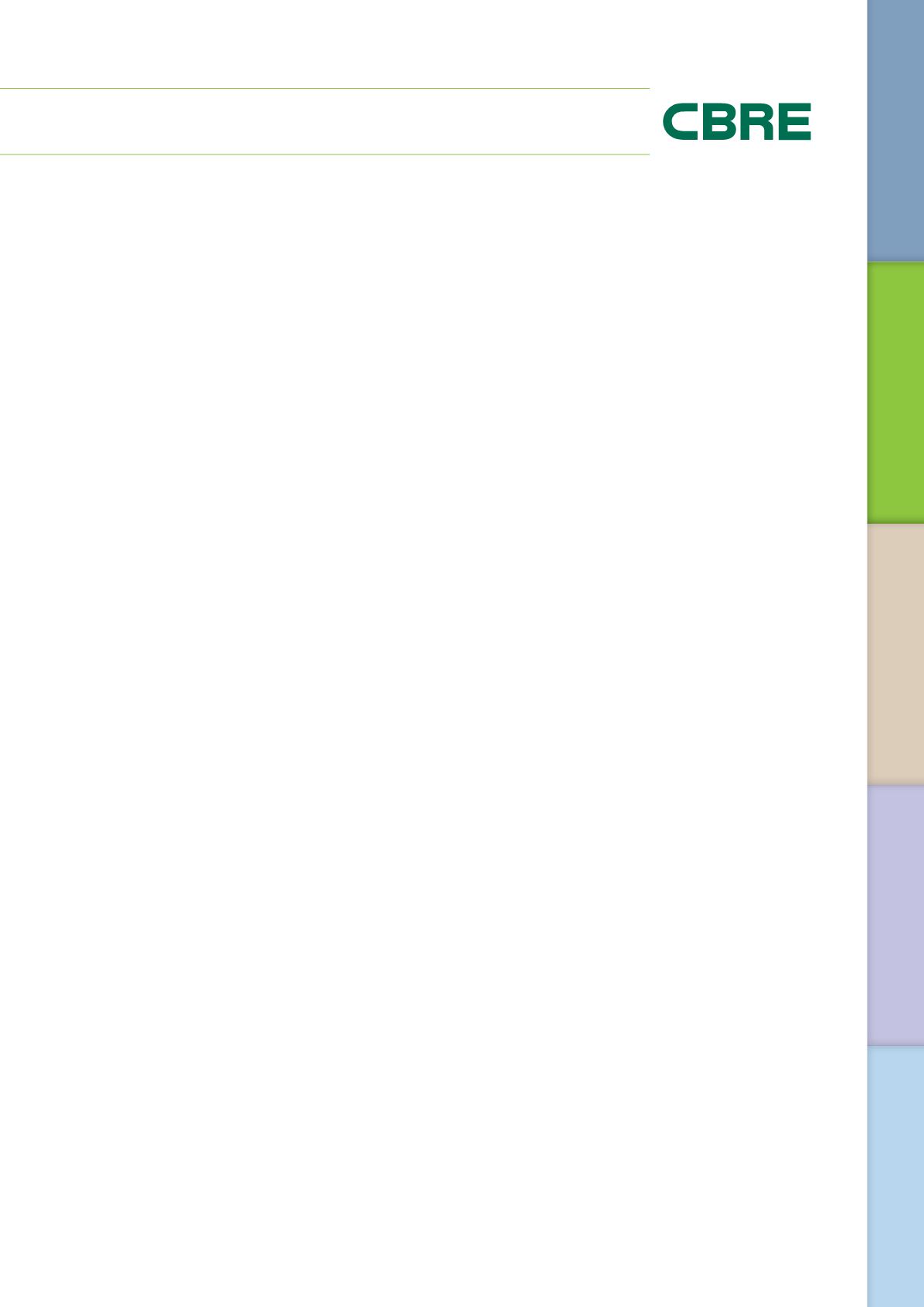

was better than expected due to improving visitor arrivals.
The decline in trading performance was also a result
to other macroeconomic factors such as a weakening
global economy and regional currency depreciation
(e.g Indonesian rupiah and Malaysian ringgit against the
Singapore dollar) which discouraged outbound travel.
EXISTING SUPPLY
A financial centre and hub for conferences and events,
Singapore is a strategic gateway for conducting business
with Asia Pacific region and the rest of the world. In the
past ten years, Singapore has witnessed a stable growth
in business demand. Noteworthy, with the introduction
of Integrated Resort (IRs) and various quality tourism
offerings, Singapore has also generated a strong demand
from the leisure segment in the recent years.
The hotel market has had a relatively stable supply for
numerous years. However, due to the opening of two
IRs, the hotel market saw a notable increase in supply in
2010, registering a 12.3% yoy growth, based on CBRE
Research. According to STB, there were 413 hotels with
63,850 rooms
(1)
as at 31 December 2016 after taking
into account the new completions and expansions. This
represents a 2,942 nett increase in rooms and a 4.8% yoy
increase in room stock. In terms of hotel demand, the
number of room nights available (RNA) and the number
of room nights (RNS) sold for 2016 increased 7.1% and
6.0% respectively yoy. With a disparity in supply and
demand, overall occupancy decreased 0.9 percentage
points to 84.2%.
FUTURE SUPPLY
In 2016, RNA increased approximately 7.1% yoy with the
majority of the new supply coming from the mid-tier to
upscale segment. This includes the 298-key Ibis Styles
Singapore on Macpherson, 314-key Oasia Downtown,
451-key Holiday Inn Express Katong and 293-key
M Social Singapore amongst others.
Hotel supply in Singapore is expected to increase
significantly in 2017. Of total supply, approximately
3,700 rooms are expected to be added between 2017
and 2018, with 2017 having the larger increase in room
inventory. However, it is also likely that some projects will
experience delays in construction, postponements or
even cancellations. CBRE expects operational headwinds
and increased competition to ease gradually as additional
supply starts to taper off from 2019 onwards.
Hotels opening in 2017 include the 610-key YOTEL
Orchard, 225-key InterContinental Singapore Robertson
Quay and 342-key Andaz Duo amongst others. While
the growth in inventory helps translate to greater hotel
stock diversity, it will however, create downward pressure
on hotel performance in terms of occupancy levels and
competitive pricing strategies.
HOTEL MARKET OUTLOOK
Singapore’s position as a financial hub continues to
attract business travellers while the existing capacity
in conference and exhibition space enables Singapore
to host larger business and MICE meetings, anchoring
Singapore’s position as a leading international meeting
city. Furthermore, leisure visitors will be drawn to
attractions such as the National Gallery of Singapore,
Gardens by the Bay, Marine Life Park and River Safari as
well as events hosted.
We expect that in 2017, the added inventory will pose
some operational headwinds, especially in terms of
occupancy levels. Hence, we predict that occupancy
levels will tighten in the near future. However, given
the strategic location of Singapore as a gateway city
and limited options for new hotel developments, we
believe that the oversupply in the next two to three
years will gradually taper off with increasing demand in
the longer term. CBRE forecasts visitor arrivals to reach
16.7 million in 2017, a 2% increase yoy. This is in line with
STB’s forecast at 16.4 to 16.7 million visitors, a 0% to 2%
increase from 2016.
In addition, there are risks that need to be taken into
account such as terrorism, disease, weather, earthquake,
economic changes etc., which are unpredictable and can
have a sudden and substantial impact on performance.
This is particularly the case for the Singapore market
which is dominated by international rather than domestic
demand. Forecasting future performance in the face of
such risks is inherently challenging and performance in
the coming years is uncertain.
With the increasing hotels supply and alternative choices
of accommodation, occupancy dropped 0.9 percentage
point to 84.2% while ADR decreased 3.6% to $237 for
the full year 2016. This resulted in a RevPAR of $199 for
2016. CBRE estimates that occupancy levels to increase
slightly by 0.3 percentage points to 84.5% in 2017 and
rates will be impacted negatively in the short term. CBRE
expects ADR to drop 1.0% to $234 and remain stagnant
in 2018. With rates and occupancy dipping, RevPAR
is forecasted to have a slight decline over the next
two years by 0.6% and 1.6% respectively. Performance
is expected to stabilise by end of 2017 as supply of new
rooms start to taper off, alongside a sustainable increase
of visitor arrivals.
(1)
Includes hostels with more than four rooms.
29
Annual Report 2016
MARKET REVIEW


















